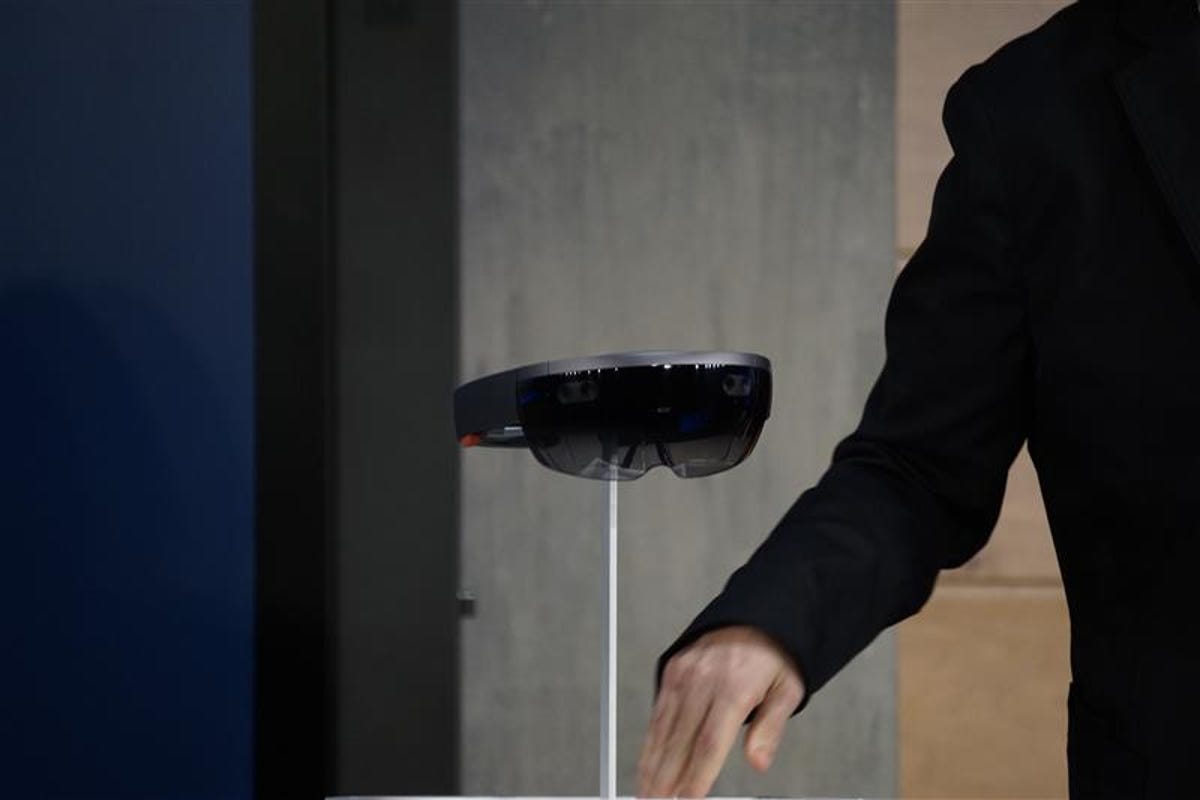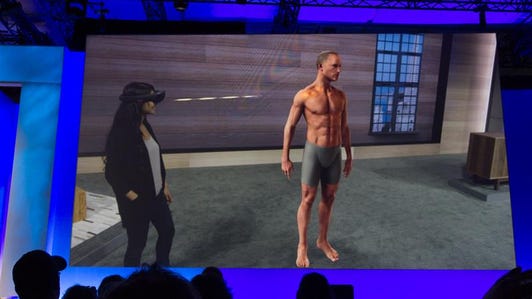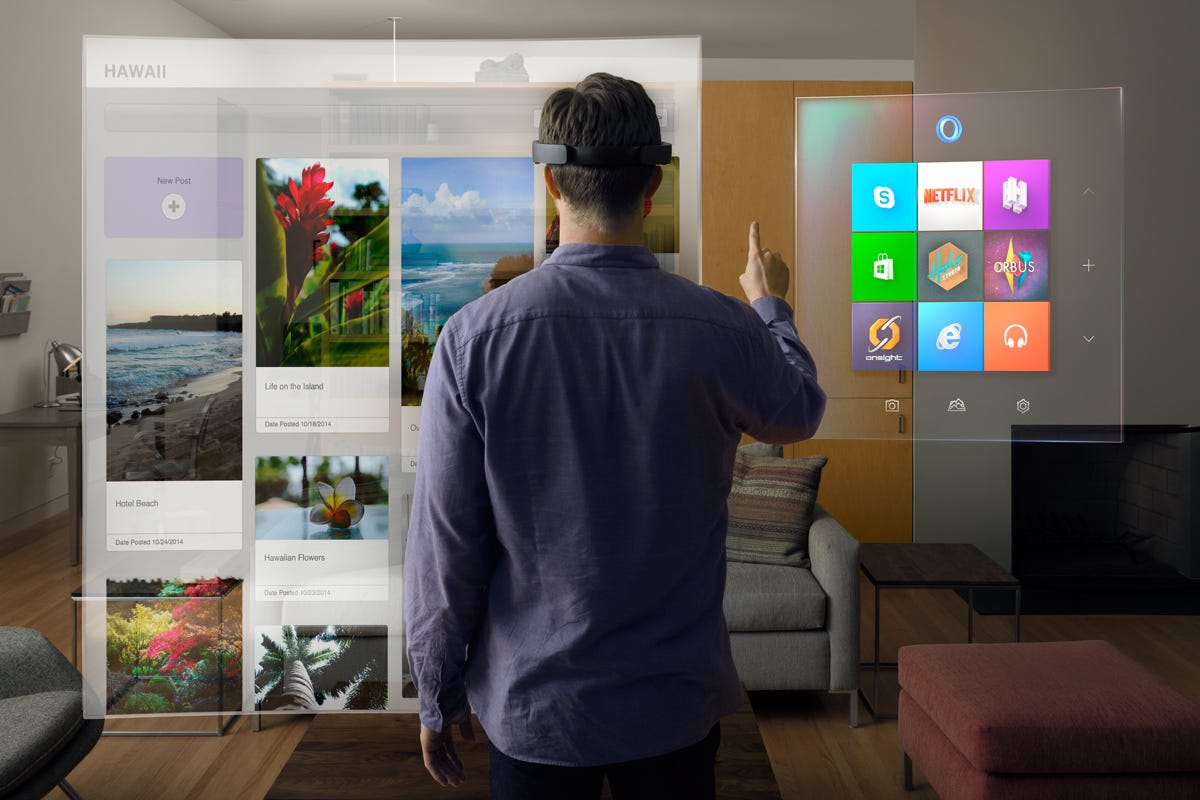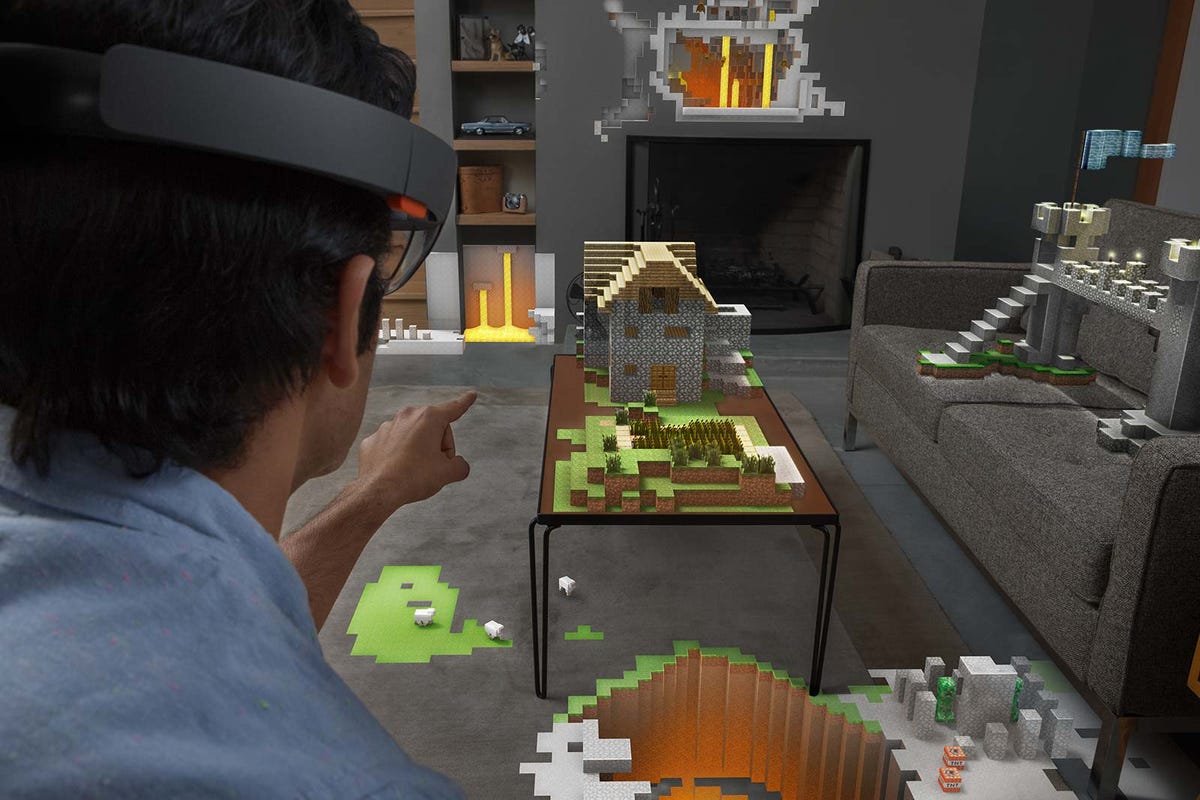
I’m a virtual reality skeptic. But from the moment I saw it, I knew that Microsoft’s HoloLens is unlike any existing VR headset, Oculus Rift included. HoloLens is smaller, for one, and the augmented, or what Microsoft calls “mixed-reality,” experience it delivers excited me. Here’s how I got there.
Different on the outside
Though more streamlined than other VR devices, the HoloLens prototype still is a bulky, garish thing. It looks like a pair of heavy ski goggles. So, while it doesn’t win points for style, it looks nothing like the Samsung Gear VR .
Check out what the Microsoft HoloLens can do (pictures)






The “Holographic Processing Unit” sits in a box that hangs around your neck, and an old-school power cord kept me from wandering too far (fortunately, a handler ensured that I didn’t trip over myself). It’s not too heavy, though the feeling that you’re lugging around quite a bit of machinery is inescapable. But none of that matters once you it flip it on.
Related Links
- Microsoft’s Surface Studio: A desktop creation station with a magic dial
- Microsoft’s Surface Books get massive battery life boost
And on the inside
Where the HoloLens differs from virtual reality is that it doesn’t take over senses entirely, Instead, you can decide what’s mapped out and what’s visible. By looking at the room, you’ll scan it to build a sort of profile of the space.
In my demonstration (CNET’s Nick Statt has more on the HoloLens back story), that meant I could use the desktop PC in front of me to look at the raw imagery the HoloLens was projecting. Then, after dragging the cursor off the screen, it showed up in the air in front of me (with an audible “pop”). You can use the floating cursor to click the space in front of you, even if navigating a 3D space with a normal mouse is a little odd. You’ll want to use your eyes (or “gaze,” in HoloLens parlance) to guide most of the action via spatial cursors.
Collaboration was especially cool, particularly when a NASA JPL scientist came aboard and walked me through how the Jet Propulsion Laboratory plans to use HoloLens to coordinate experiments later this year.


Microsoft
A more immersive Skype
For more collaboration, look no further than Skype. I’ve used Skype many, many times, but never like this. Microsoft tasked me with installing a light switch with help from a “friend” calling me remotely. His video feed followed my gaze, but I could also pin him to a spot in the air in front of me and keep him in place while I looked around the room. All the while he could see everything I could, and proceeded to draw instructions in the air in front of me.
I’m pretty handy around the house, but this sort of virtual hands-on instruction was phenomenal. I’m already imagining assisting a far off friend install a new CPU in his PC, or helping him troubleshoot some other tricky-to-explain technical snafu.


Microsoft
Minecraft on steroids
While the Skype demo was largely limited to pointing and gesturing at static images, Holobuilder delivered a far more interactive lesson in what HoloLens can and can’t do. Think of Holobuilder as augmented-reality Minecraft. When I strapped on the headgear, it started scanning the room around me, mapping out the prebuilt experiences designed for my demo. Sheep scurried underfoot, and I could chase them away with a tap. Dynamite hung on the wall: I blew it up, and could see the caverns hidden behind.
Since Holobuilder actually constructs the block world out of its surroundings, the attention to detail is incredibly deep. For instance, when I blew a chunk out of the bench in front of me to deal with some zombies, the shards of destroyed wood matched the bench perfectly. That was impressive.
In another demo, HoloLens used high resolution images taken by the Curiosity rover to build a 3D environment for you to navigate. It’s all real imagery from Curiosity: real rocks, real sand, the real Martian sky and real Martian mountains stretching off into the distance. I understand it was just a clever trick with pretty pictures, but I nonetheless couldn’t wipe the slack jawed expression off of my face.
Loads of potential, but some work to do
The HoloLens gave a surreal and satisfying experience, but I wanted more out of it. Currently, I could control it only with my gaze, and by hovering my finger in the air to tap on a cursor. Those work fine, but it needs more sophisticated gestures that mimic real-life movements.
Let’s say you want to dig a hole. You can call out for a shovel (voice inputs work fantastically) and it appears on a cue, but you dig by tapping rather than by moving your arms. Blowing up dynamite works similarly, as does scaring off wildlife. You get the desired result, but I wanted to pick critters. I wanted to claw away handfuls of soil, or flick zombies, or scratch away at the surface before me.
Granted, it’s probably too early to start making demands of prototype hardware, but that’s the danger Microsoft is running into here. Even in its infancy, HoloLens gives me the augmented reality experience I never knew I wanted, and now I want it again and again.
I want my meetings to be held via HoloLens. I want to handle all computer concerns in this augmented wonder world. And I want build a dizzying labyrinth in my tiny apartment that anyone with the right tools can see. But more importantly, I want to see where Microsoft is going to take things next. As it stands, things are looking pretty great.


Now playing:
Watch this:
5 things you need to know about Microsoft HoloLens
1:39



